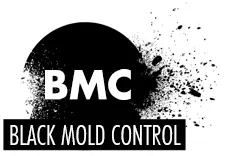Do you know how to identify black mold? If your answer is no, it is critical that you learn how to detect it, particularly if you are a homeowner. This dangerous and toxic fungus can quickly take root and spread its spores, putting your home’s value and your family’s health at risk.
By knowing how to detect the signs of it, you can make a positive identification of this fungus and act quickly and assertively in your home’s best interests. You also avoid confusing it with other types of mold that may be inconvenient and messy but pose no serious hazard to your household.
Table of contents
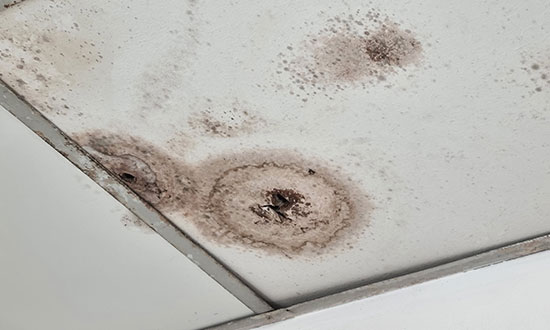
Mold identifications: black mold vs regular mold
It is also important as a homeowner that you do not confuse toxic black mold with regular mold. In fact, both types can look similar to each other. However, the regular type of fungus does not pose as much risk to your home or your family.
The regular variety may be black in color but is not toxic. Toxic black mold can be either green or black. It releases mycotoxins that can make you seriously ill if you come into contact with or inhale them.
Black colored mold
When you look for signs of this fungus, you need to how to identify the black colored variety. Spores of the regular variety can spread quickly. However, they are not dangerous if you touch or breathe them in unless you are allergic to them.
The identification of the regular variety can be made through its color. It is primarily black. It also can grow in places like drywall and wood framing, particularly if these areas become wet or are exposed to moisture and humidity.
Black toxic mold
It is critical to know how to detect the signs of this toxic variety of fungus. The most common type of it is Stachybotrys chartarum. It releases mycotoxins that people can breathe in or come into contact with and make them dangerously sick.
Contrary to its name, it may not be entirely black in color. It can also be dark green. It most often grows in areas of the house where it is wet, such as the crawlspace or basement, as well as in the attic where water, humidity and moisture can get in and create ideal conditions where fungal spores can take root.
What does black mold look like?
When you want to identify positively the signs of the dangerous type of this fungus versus the regular type, you need to know for what characteristics to look. The toxic variety can look dark green or black in color. It may also be gray, depending on where it is growing in your home.
You can also identify it by its odor. The odor is one of the tell tale signs of it that can help you detect its presence. It may smell musty and like mildew where it grows.
Signs of black mold in your home
This type of fungus will show several signs to help you with its positive identification. Some of the ways to identify it and the spread of its spores include:
- A musty odor in areas where it grows
- Discolored walls, ceilings, floors and other areas
- Water damaged or rotted flooring, ceiling and wall materials
- Eye and skin irritation or breathing problems among household members
These signs can help you identify this fungus’s presence and should prompt you to take immediate action.
Smell
One of the main ways to identify this type of dangerous fungus is by its smell. It has a distinct smell that can be impossible to ignore, particularly if you come into close contact with it and its spores.
The smell has been described as being earthy and akin to rotting vegetables. Other people describe it as smelling like mildew. If you smell mustiness or rot, you should try to identify if this fungus is growing in your home.
Health problems
The health problems that this detrimental fungus causes can be other ways to identify it. Some of the most common health problems associated with it include:
- Chronic coughing and sneezing
- Fatigue
- Skin rashes
- Difficulty breathing
- Eye irritation
- Persistent headaches
If you or anyone in your home experiences these symptoms regularly, you may need to have your home professionally inspected for mold.
Toxic mold test, do they help?
Professional inspection and testing can tell you definitively if you have this fungus in your home. The tests can reveal if the fungus is toxic and what type it is for sure. They can also identify where the fungus took root and from what areas in your home it has spread.
The tests can confirm signs that you may have suspected and give you positive results in a matter of minutes. They can also confirm that you need to take immediate action like hiring a professional remediation service to eliminate it and prevent future fungal growth.
Want to read more? Recommended article: Black mold inspection and testing
Black mold pictures
Do you like to see more pictures of black mold or want to sent in your own picture? At www.inspectapedia.com they identify the mold for you. [external link to Inspectapedia]
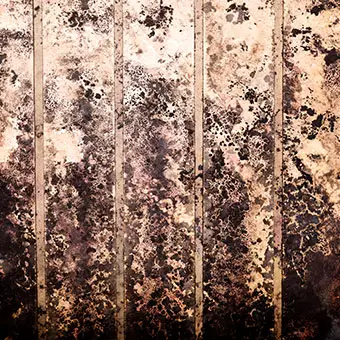
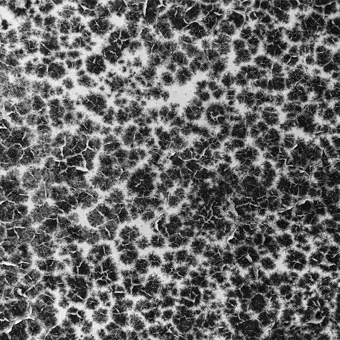
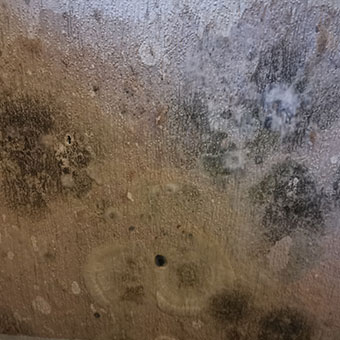
How to identify black mold on wood?
You can positively identify this toxic fungus on wood in your home by knowing its most common signs. Rot, for example, is one of its most tell tale signs. If the wood in your floors, ceilings, walls and other fixtures appear to be rotted, you may suspect that this fungus is present in them.
Likewise, if the wood appears discolored or looks like it has water stains on it, you also may inspect them further for it. It can make wood bow out or warp after spores have taken root and spread. You may want to hire a professional inspector or remediation company to confirm its presence in your home’s wood.
Recommended read: Black mold on wood
How to identify black mold on drywall?
Drywall can also take on a distinct look after spores have spread and taken root in it. Like wood, it can look water stained and discolored. The drywall in your walls and ceilings can become yellowed, browned or have what looks to be water streaks in it.
Rot is another common side effect of this fungal growth. The drywall fixtures in your home might collapse or fall through easily because of it. They also may be easy to crumble or tear holes in if you touch or step on them.
Finally, fungal-infested drywall can smell musty, old and dirty. If you notice these types of odors in your drywall fixtures, you should suspect that they are full of spores and need to be torn out and replaced immediately.
Recommended read: black mold on drywall
How to identify black mold on other surfaces?
Black mold has a distinct look that should signal to you its presence on other surfaces in your home. It may look dark green or gray, depending on where it is growing. It also may simply look like black, fuzzy spots growing in dark and wet corners of the floor, ceiling, walls and other areas.
If other surfaces in your home have been exposed to moisture, humidity or water and have this type of growth on them, you should suspect that the spores are actually black fungus. The spots may even be difficult to sweep or scrub and only be removed and killed if you spray bleach or ammonia on them.
How do I get rid of black mold?
Your best option for getting rid of it involves calling a professional remediation service. The remediation contractors use professional equipment and cleaning chemicals to kill the spores and eliminate infestations. They also wear safety gear like goggles and respirator masks to avoid breathing it in and cordon off the areas where they work to prevent spores from spreading to other parts of your home.
